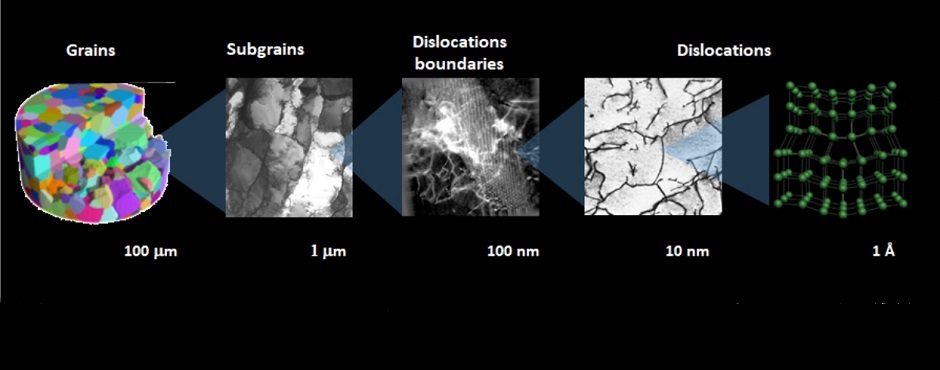Duration
(October 1, 2020 to September 30, 2025)

PMP - ERC advanced grant - will exploit the physics of plasticity. For the first time, we can directly see the processes involved: the creation of dislocations, their self-organization, and subsequent creation of ever more complex patterns. At the same time, we can deduce the local stress. This will provide answers to longstanding core questions of metal science.
The societal need to conserve materials and energy calls for lighter and stronger metal components.
The advantage of metals is their unique combination of plasticity (i.e. formability) and strength, which is governed by their complex structure. This structure is organized hierarchically on several length scales. In contrast to functional materials and polymers, this complexity has led to the common theoretical framework being not physics, but an engineering science: metallurgy. As a result, phenomenological models prevail.
The big obstacle to understand the underlying physics is the lack of visualization of the dynamics of the structure. From 2012 to 2019 I have developed a hard X-ray microscope for high-resolution 3D studies. Uniquely, this now allows us to zoom into the material and map grains and dislocations. This will enable 3D movies on all relevant length scales. No competing group will have anything similar within the next 5 years.
PMP will exploit this to unravel the physics of plasticity. For the first time, we can directly see the processes involved: the creation of dislocations, their self-organization, and subsequent creation of ever more complex patterns. At the same time, we can deduce the local stress. This will provide answers to longstanding core questions of metal science.
Current multiscale models of plasticity are not capable of predicting realistic patterns. The new data will guide theory and allow for direct comparison of models and experiment at all scales. PMP will develop a physics-based multiscale model of plasticity that for the first time can predict which patterns evolve when and where in the metal, and as a result greatly improve predictions of the macroscopic plasticity and strength.
If successful, we have created the instrumental and modelling foundation for a new paradigm in structural materials. This will support the ultimate vision of materials and process design in computer models rather than trial and error in the lab.
Duration
Grant
Here are presented the news and events connected to PMP.
PMP is part of different events and our in situ movies of dislocation dynamics during plastic deformation have been presented at a set of conferences:
Henning Friis Poulsen Professor, Section leader Mobile: +45 23396938 hfpo@fysik.dtu.dk
Grethe Winther Head of Section, Professor Mobile: +45 93511691 grwi@dtu.dk
Anne Mette Persdotter Research Administrator Mobile: +45 93511721 ampe@dtu.dk